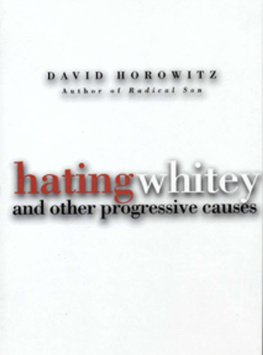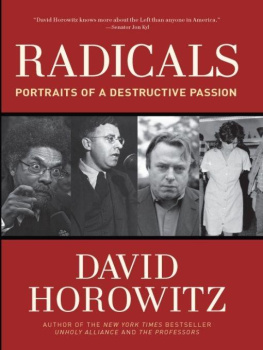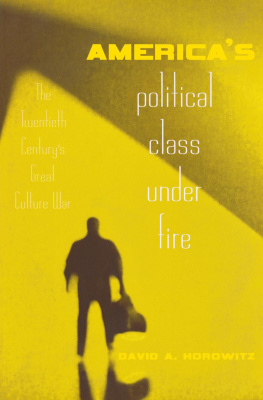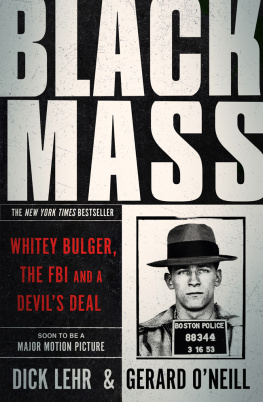David Horowitz - Hating Whitey and Other Progressive Causes
Here you can read online David Horowitz - Hating Whitey and Other Progressive Causes full text of the book (entire story) in english for free. Download pdf and epub, get meaning, cover and reviews about this ebook. year: 2000, publisher: Spence Publishing Company, genre: Politics. Description of the work, (preface) as well as reviews are available. Best literature library LitArk.com created for fans of good reading and offers a wide selection of genres:
Romance novel
Science fiction
Adventure
Detective
Science
History
Home and family
Prose
Art
Politics
Computer
Non-fiction
Religion
Business
Children
Humor
Choose a favorite category and find really read worthwhile books. Enjoy immersion in the world of imagination, feel the emotions of the characters or learn something new for yourself, make an fascinating discovery.
- Book:Hating Whitey and Other Progressive Causes
- Author:
- Publisher:Spence Publishing Company
- Genre:
- Year:2000
- Rating:4 / 5
- Favourites:Add to favourites
- Your mark:
- 80
- 1
- 2
- 3
- 4
- 5
Hating Whitey and Other Progressive Causes: summary, description and annotation
We offer to read an annotation, description, summary or preface (depends on what the author of the book "Hating Whitey and Other Progressive Causes" wrote himself). If you haven't found the necessary information about the book — write in the comments, we will try to find it.
Hating Whitey and Other Progressive Causes — read online for free the complete book (whole text) full work
Below is the text of the book, divided by pages. System saving the place of the last page read, allows you to conveniently read the book "Hating Whitey and Other Progressive Causes" online for free, without having to search again every time where you left off. Put a bookmark, and you can go to the page where you finished reading at any time.
Font size:
Interval:
Bookmark:
and my grandson Elvis Rishon,
and to April,
who has had the courage
to stand with me in these battles
GET WHITEY
BLACK CAUCUS
PANTHER REFLECTIONS
PROGRESSIVE EDUCATION
LOOKING BACKWARD
FOREIGN AFFAIRS
M ANY OF THE ESSAYS in this book appeared originally in the Internet magazine Salon , for which I have written a column every other Monday for more than two years. I am grateful to Salon's editor, David Talbot, who probably disagrees with most of the contents of this volume, for the opportunity he has provided me to reach an audience outside the conservative ghetto to which the rest of the liberal media has consigned my writing since I had second thoughts nearly twenty years ago. When I was still on the political left, David showed similar courage in de- fending Peter Collier and me when we came under attack in 1980 in the professional association Media Alliance for writing the truth about the prison radical George Jackson and his attorney, Fay Stender. David's integrity and courage were again manifest in 1993 when, as editor of the "Ideas and Opinions" section of the San Francisco Chronicle , he reprinted the story, "Black Murder, Inc.," which appears in this volume. It was first published in Heterodoxy , the magazine Peter Collier and I edit. David was (and is to this day) the only member of the national media to show interest in this story, which concerns the most celebrated political organization of the New Left and its involvement in the murder of innocents.
My hands-on editors at Salon, Andrew Ross and David Weir, who also disagree with my current views, could not have been more supportive personally and professionally if they had been political soulmates. If more people were capable of an ecumenical spirit like theirs, our political discourse would be far more civilized and our civic order, more humane.
Finally, I wish to thank Benjamin Kepple and Cris Rapp of Heterodoxy , who provided me with editorial and research assistance. Their dedication and care has made this manuscript better and more accurate that it would otherwise have been.
* See "Requiern" in David Horowitz, Radical Son (New York: Free Press, 1998), 309ff., where the story of this article is told and the attacks on it described.
Memories in Memphis
ON A RECENT TRIP TO THE SOUTH I found myself in Memphis, the city where Martin Luther King Jr. was struck down by an assassin's bullet just over thirty years ago. Memphis, I discovered, is home to a "National Civil Rights Museum," established by a local trust of African-Americans active in civil rights causes. Tucked out of the way on a side street, the museum is housed in the building that was once the Lorraine Motel, the very site where Dr. King was murdered. I decided to go.
Except for two white 1960s Cadillac convertibles parked under the motel balcony, the lot outside was empty when I arrived. It is part of the museum's plan to preserve the memories of that somber day in April three decades ago. The cars belonged to King and his entourage, and have been left as they were the morning he was killed. Above them, a wreath hangs from a balcony railing to mark the spot where Dr. King fell. Beyond is the room where he had slept the night before. It, too, has been preserved exactly as it was, the covers pulled back, the bed unmade, the breakfast tray laid out as though someone would be coming to pick it up.
Inside the building, the first floor of the motel has vanished completely, hollowed out for the museum's exhibits. The cavernous room has become a silent stage for the dramas of the movement King once led. These narratives are recounted in documents and photographs, some the length of wall frescoes, bearing images as inspirational today as then. In the center of the hall, the burned shell of a school bus recalls the freedom rides and the perils their passengers once endured. Scattered about are small television screens whose tapes recapture the moments and acts that once moved a nation. On one screen a crowd of well-dressed young men and women braves police dogs and water hoses vainly attempting to turn them back. It is a powerful tribute to a movement and leader able to win battles against overwhelming odds by exerting moral force over an entire nation.
As a visitor reaches the end of the hall, however, he turns a corner to a jarring, discordant sight. Two familiar faces stare out from a wall-size monument that seems strangely out of place the faces of Malcolm X and Elijah Muhammad, leaders of the Nation of Islam. Aside from a portrait of King himself, there are no others of similar dimension in the museum. It is clear that its creators intended to establish these men along with King as spiritual avatars of the civil rights cause.
For one old enough to have supported King, such a view seems incomprehensible, even bizarre. At the time of these struggles, Malcolm X was King's great antagonist in the black community, leading the resistance to the civil rights hope. The black Muslim publicly scorned King's March on Washingtort as "ridiculous" and predicted the failure of the civil rights movement King led because the white man would never willingly give black Americans such rights. He rejected King's call for non-violence and his goal of an integrated society, and in so doing earned the disapproval of the American majority that King had wooed and was about to win. Malcolm X even denied King's racial authenticity, redefining the term "Negro," which King and his movement used to describe themselves, to mean "Uncle Tom."
King was unyielding before these attacks. To clarify his opposition to Malcolm X's separatist vision, King refused to appear on any platform with him, effectively banning Malcolm from the community of respect. The other heads of the principal civil rights organizations, the NAACP's Roy Wilkins and the Urban League's Whitney Young joined King in enforcing this ban. It was only in the last year of Malcolm's life, when the civil rights cause was all but won, and wen Malcolm had left the Nation of Islam and rejected its racism, that King finally relented and agreed to appear in the now famous photograph of the two that became iconic after their deaths.
Yet this very reconciliation more a concession on Malcolm's part than King's could argue for the appropriateness of Malcolm's place in a "civil rights" museum. Malcolm certainly earned an important place in any historical tribute to the struggle of the descendants of Africans to secure dignity, equality, and respect in a society that had brought them to its shores as slaves. Malcolm's understanding of the psychology of oppression, his courage in asserting the self-confidence and pride of black Americans might even make him worthy of inclusion in the temple of a man who was never a racist and whose movement he scorned.
But what of Elijah Muhammad? What is a racist and religious cultist doing in a monument to Martin Luther King? This is a truly perverse intrusion. The teachings of Elijah Muhammad mirror the white supremacist doctrines of the Southern racists whose rule King fought. According to Muhammad's teachings, white people were invented six thousand years ago by a mad scientist named Yacub in a failed experiment to dilute the blood of the original human beings, who were black. The result was a morally tainted strain of humanity, "white devils," who went on to devastate the world and oppress all other human beings, and whom God would one day destroy in a liberating Armageddon. Why is the image of this bizarre fringe racist blown up several times life-size to form the iconography of a National Civil Rights Museum? It is as though someone had placed a portrait of the leader of the Hale-Bopp Comet cult in the Jefferson Memorial.
Font size:
Interval:
Bookmark:
Similar books «Hating Whitey and Other Progressive Causes»
Look at similar books to Hating Whitey and Other Progressive Causes. We have selected literature similar in name and meaning in the hope of providing readers with more options to find new, interesting, not yet read works.
Discussion, reviews of the book Hating Whitey and Other Progressive Causes and just readers' own opinions. Leave your comments, write what you think about the work, its meaning or the main characters. Specify what exactly you liked and what you didn't like, and why you think so.











